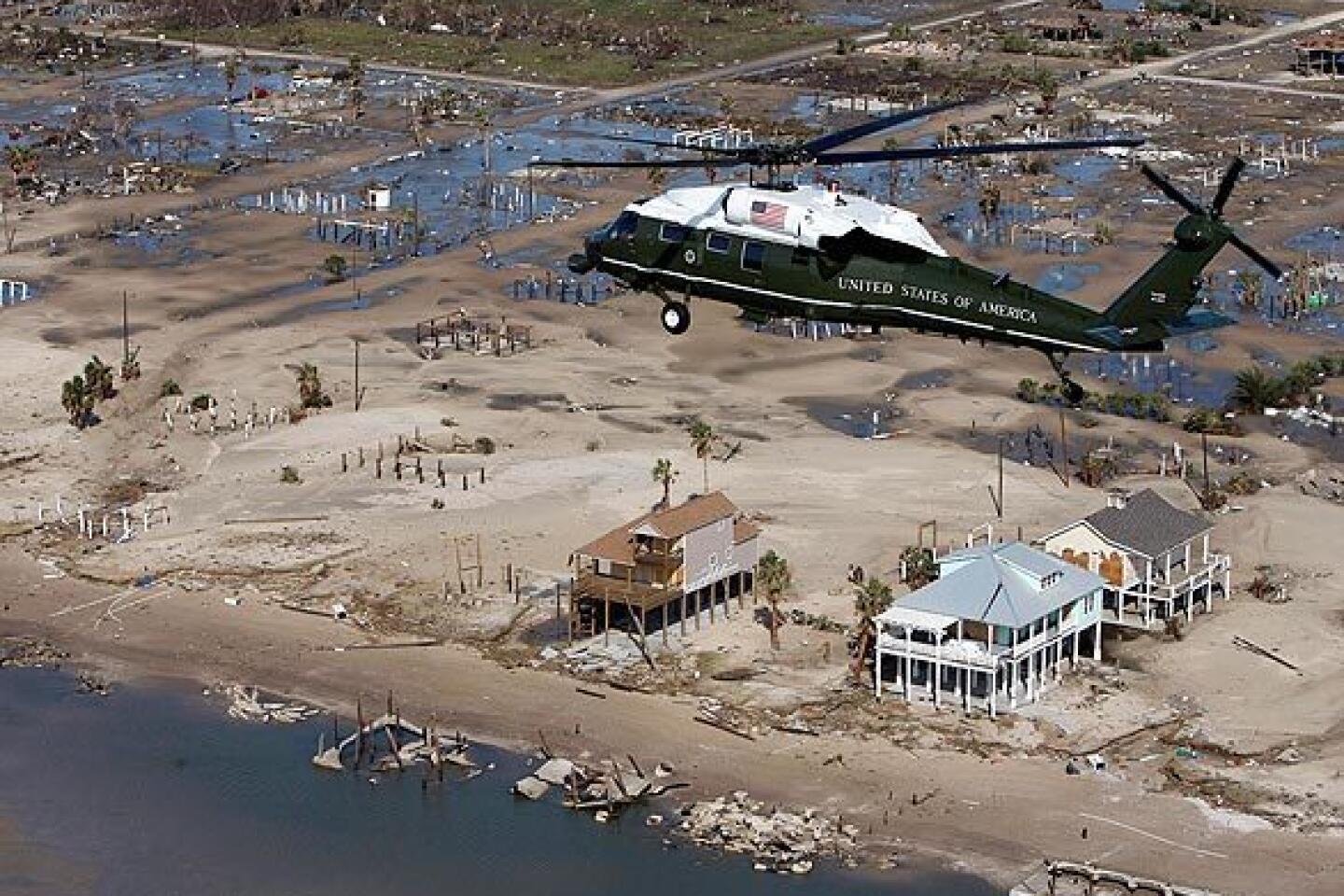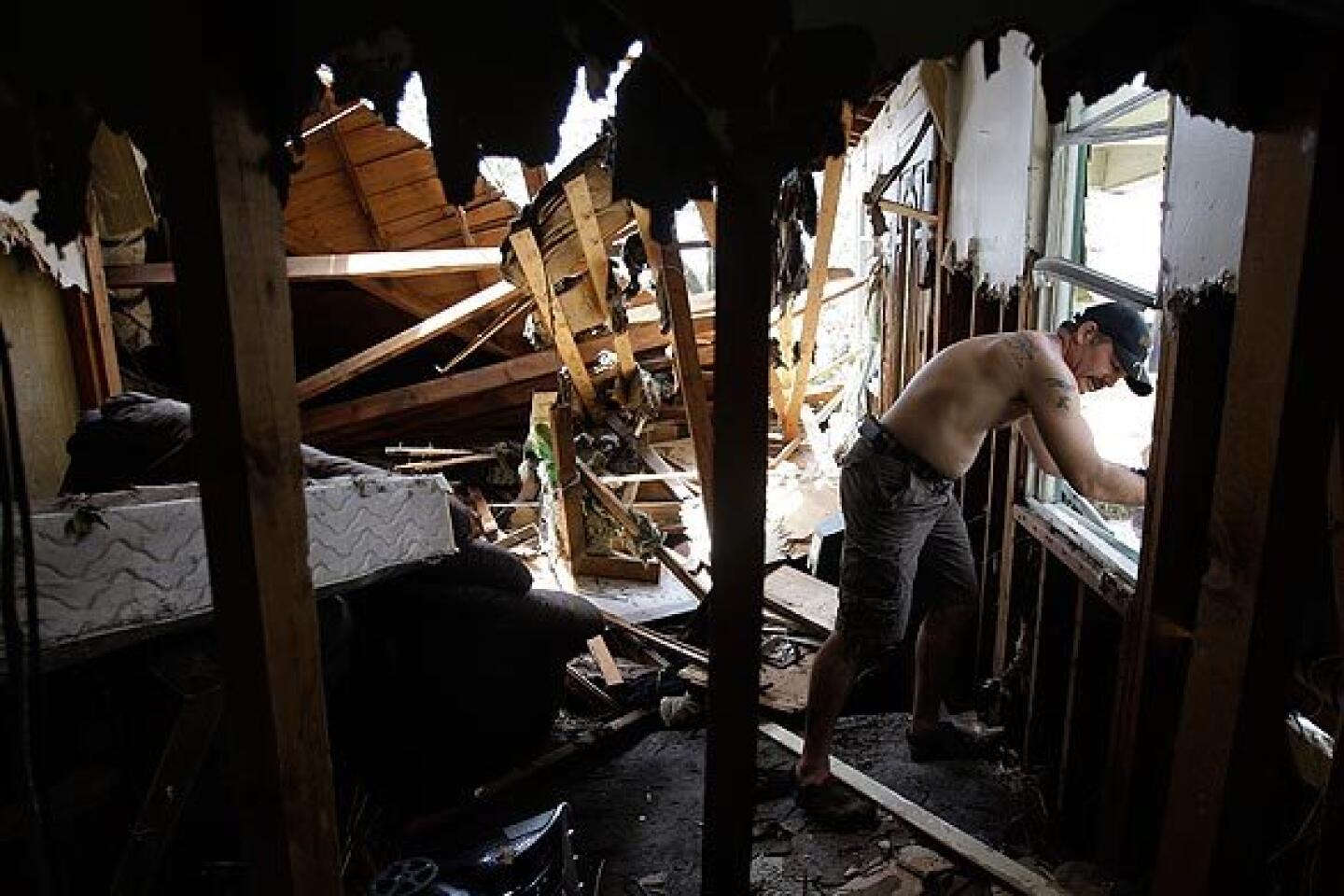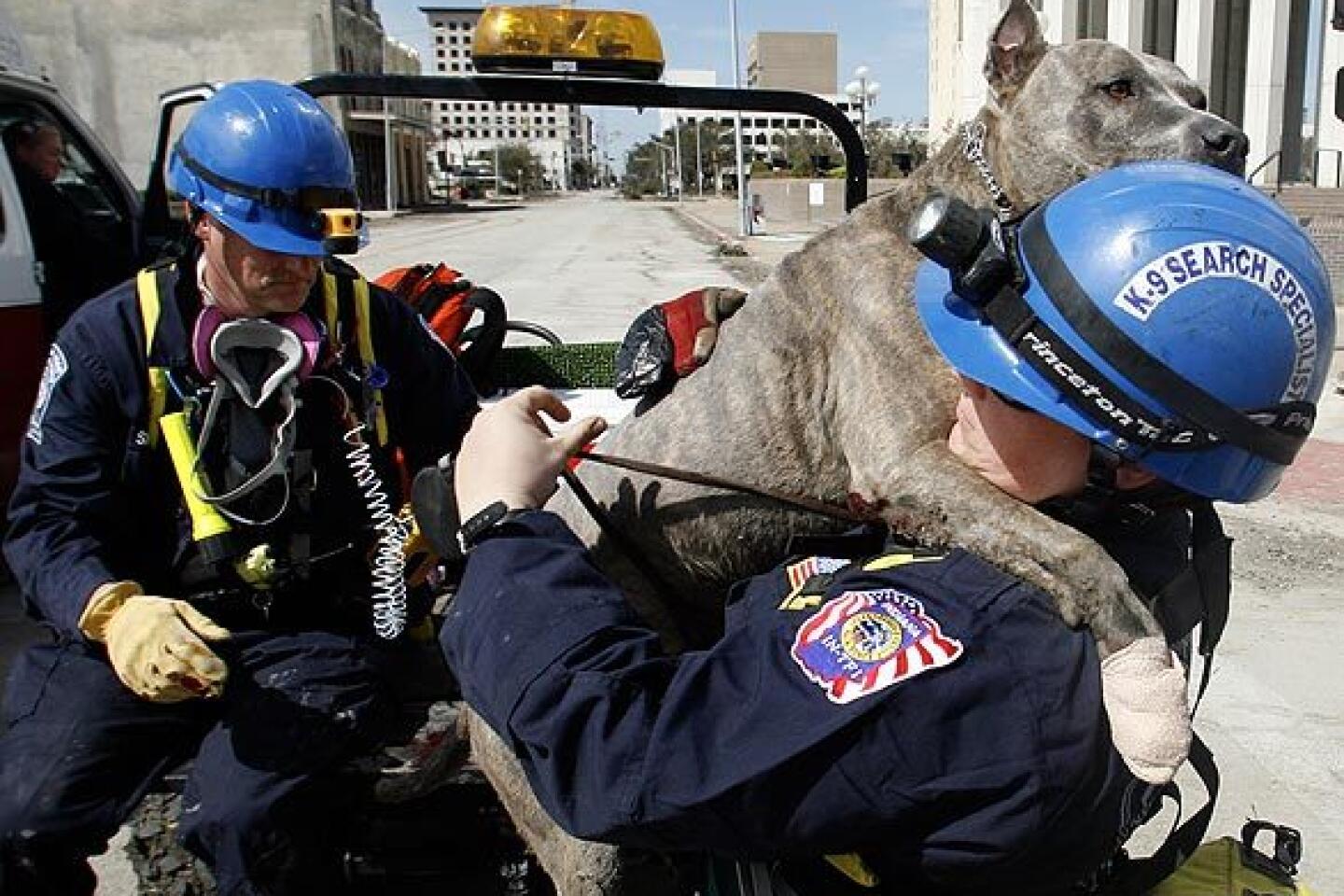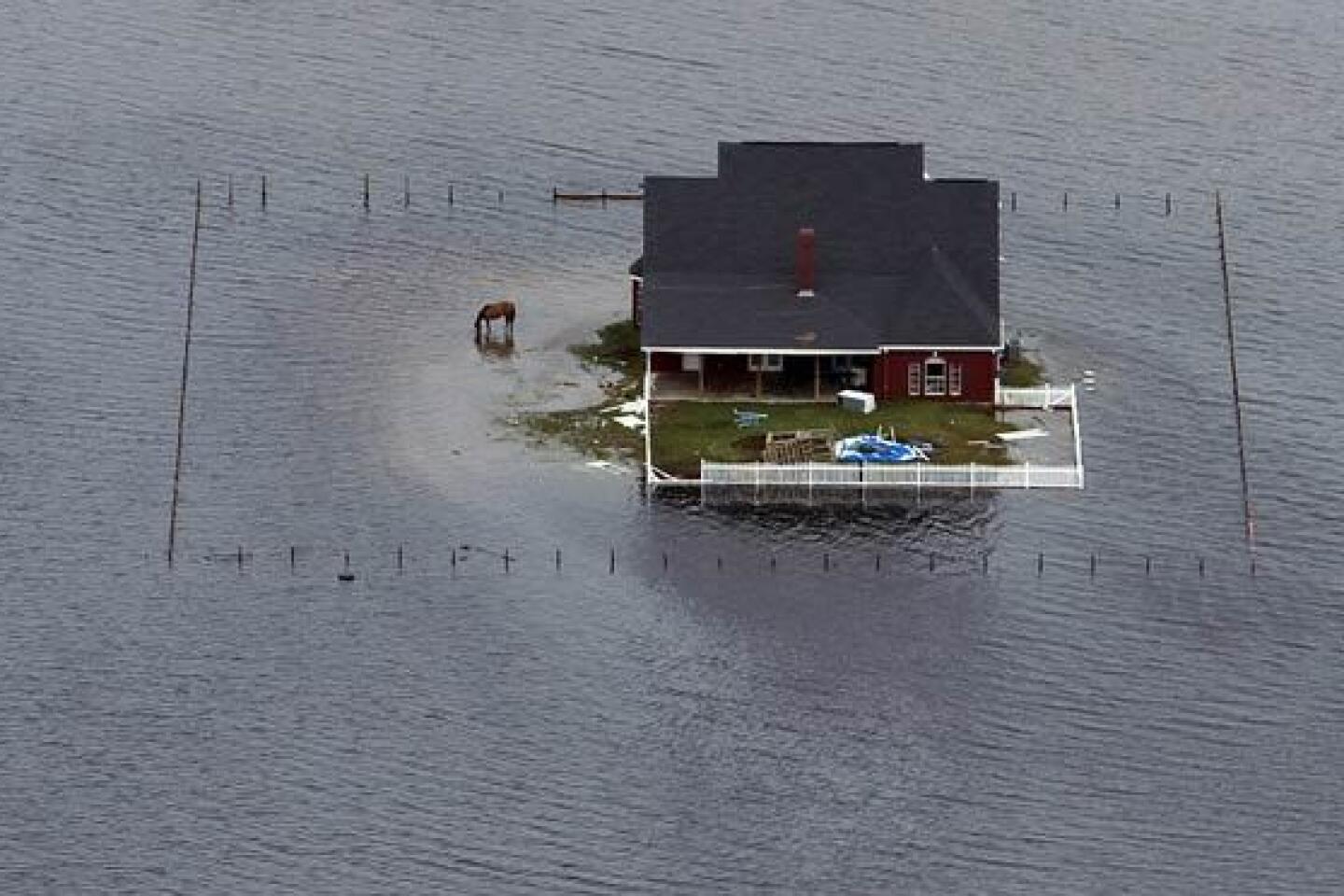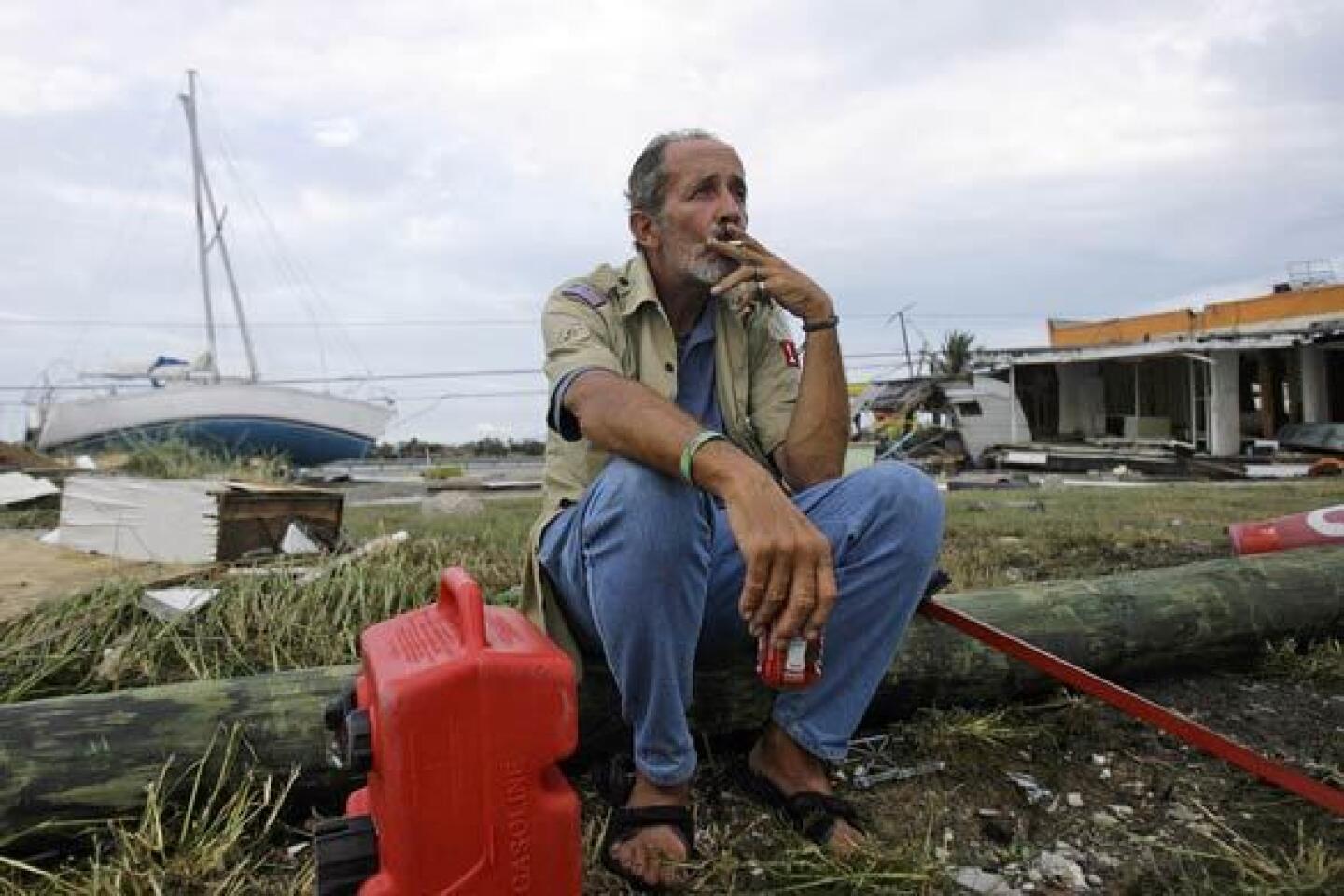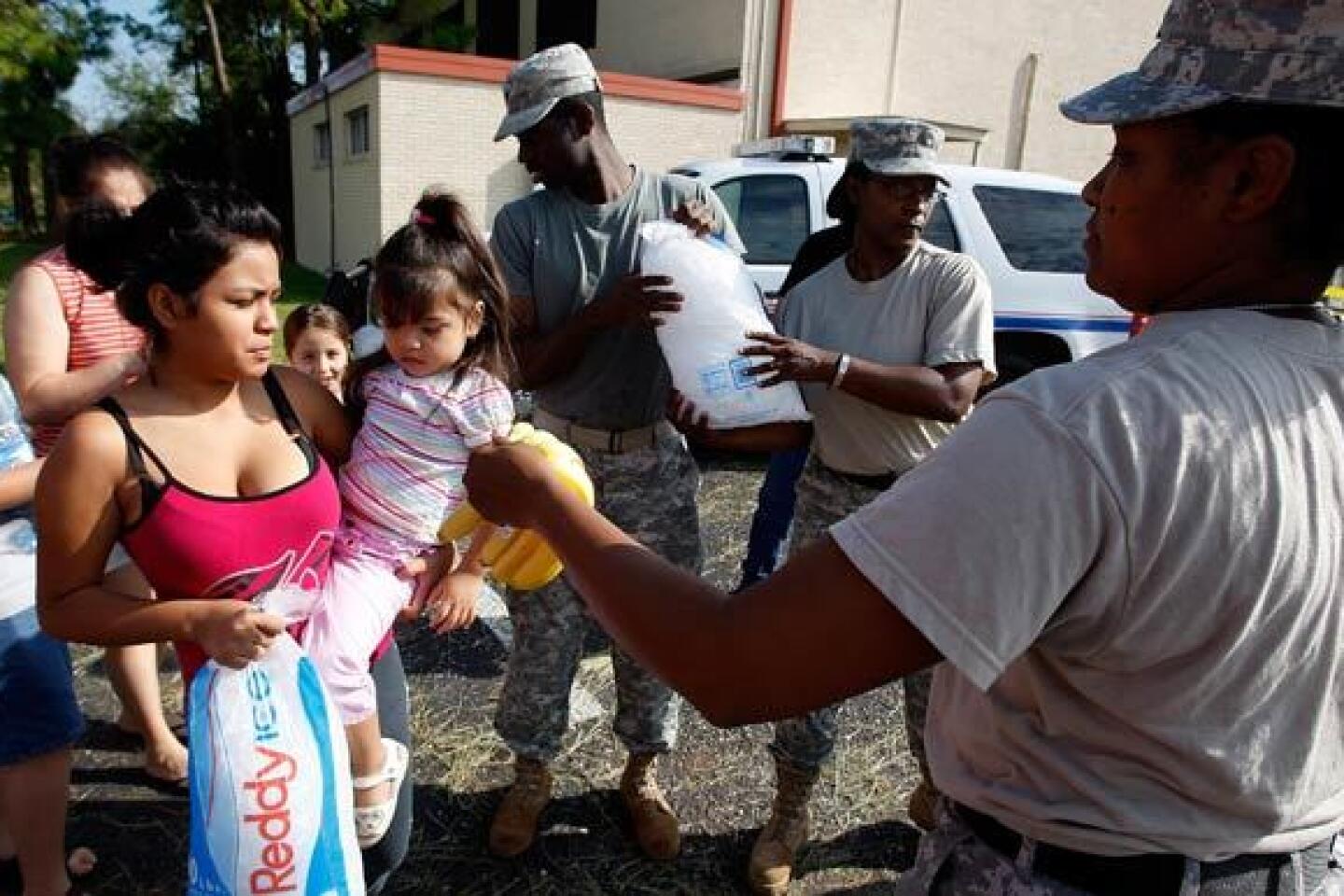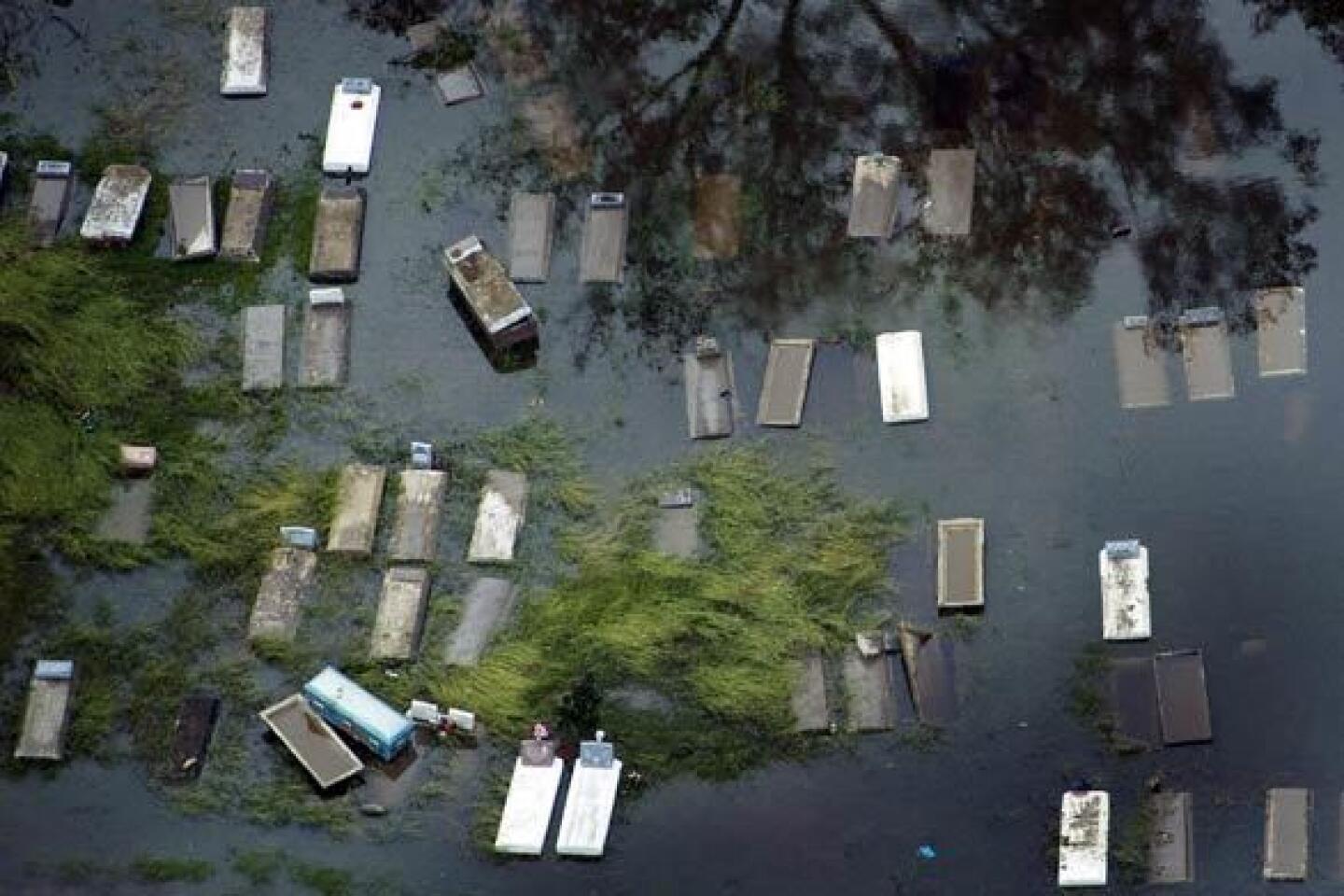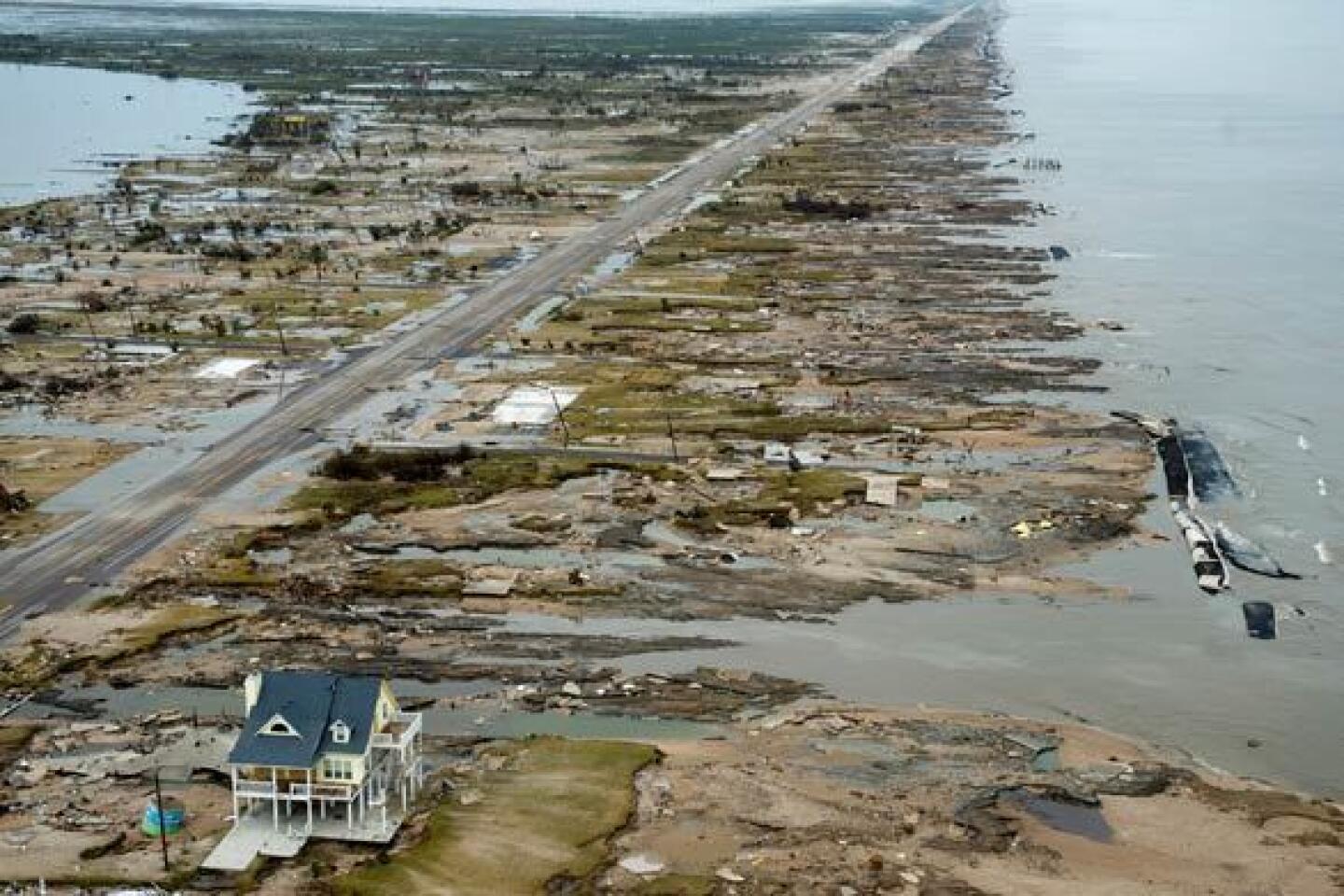A bird’s-eye view of Hurricane Ike’s handiwork along Texas coast
- Share via
ABOARD U.S. COAST GUARD SEARCH AND RESCUE — The big orange Jayhawk chopper banked hard to the left, revealing what remained of a stretch of beach on the Bolivar Peninsula south of Houston.
Hurricane Ike’s brutal tidal surge had crashed down on beach homes. They lay shattered, roofs and insulation tossed across the strand. Where some houses once stood, only pilings remained.
Everywhere there was water, and no sign of life.
It was a searing sight for two U.S. Coast Guardsmen aboard the HH-60 helicopter Monday. Anthony Pesek and Kyle Chapman knew people on the peninsula, knew how tightknit the community had been, and how badly it had been ripped apart.
“I knew a lot of people down there,” Pesek said. “I came across a very familiar scene, and it reaches in and crushes hard. It really hit home for me.”
Much of the attention on Ike’s destruction has focused on Galveston Island, but Coast Guardsmen who have flown over Bolivar Peninsula, a few miles northeast, believe it was hit even harder.
“I’m so sad for all those families -- so sad to see all those homes gone -- just disappeared,” Chapman said.
Ground search and rescue teams are still looking for survivors -- or bodies -- on Bolivar and Galveston. Pesek and Chapman flew over both areas Monday, trying to assess the damage as the scenes of loss gnawed at them.
“Seeing that moved it from the work side of my mind and put it on the personal side,” Pesek said.
Pesek is a solidly built, sandy-haired chief warrant officer assigned to assess drilling rigs and platforms in the Gulf of Mexico off southeast Texas. Chapman, voluble and easygoing, is a marine science technical chief who was assessing vessels and waterways.
As the helicopter pulled away from Bolivar, Chapman grabbed a pen and scribbled a note amid the deafening roar of the aircraft’s engines. It read: “Bolivar Peninsula is now Bolivar Island.”
Pesek studied a nautical map and Chapman snapped digital photographs as the helicopter swooped over other areas where Ike made landfall Saturday morning. Two Coast Guard rescue swimmers were aboard too, in case anyone needed rescuing.
The guardsmen saw no signs of life in the worst-hit sections of Bolivar. A swoop over the west end of Galveston revealed a similar tableau.
The helicopter swung southeast over the glassy gray-blue gulf. The guardsmen turned their attention to the drilling rigs and platforms, which soon appeared on the horizon -- bulky orange boxes on white legs that seemed too frail to support them.
Pesek was surprised to see how well the structures had held up. He spotted only a few damaged railings.
“They’re in surprisingly good condition,” Pesek said. “I thought we would see something worse, after seeing all the devastation at Bolivar.”
On and on, over a four-hour flight that stretched 51 nautical miles out to sea, the helicopter flitted from one platform and rig to the next. Each one seemed firm and stalwart.
Pesek was encouraged. He had selected 17 platforms and four drilling rigs for inspection because they were on the east side -- the “dirty” side -- of the hurricane, subject to the worst punishment.
Because the structures that bore the brunt of the storm had fared fairly well, Pesek hoped it meant that thousands of other platforms had escaped serious damage as well.
When oil and gas production will resume is up to oil companies, which are conducting their own reviews.
Chapman’s assessments were mixed. The Galveston-Port Bolivar ferry appeared to be in fairly good shape; Chapman would know more after he studied his photos.
But the channels and canals were swollen with debris and wrecked boats. Navigation along the Gulf Coast had been badly disrupted.
Just before the helicopter readied to return to shore, the pilot, Lt. j.g. Scott Wilkerson, spotted a raft. Rescue swimmer Michael Linehan was lowered by cable to investigate.
He confirmed the raft was empty and punctured it with a knife. It would sink; no one else would report it and force another reconnaissance mission.
At dusk, the chopper passed again over the ruined houses and businesses of Galveston Island and dropped gently onto the tarmac at Ellington Field, a military airfield south of Houston. Pesek and Chapman would file their reports and resume their own post-Ike lives.
Until recently, Pesek lived in League City, Texas, on the mainland just north of Galveston. But, weary of evacuating his family every time a hurricane approached, he moved 2 1/2 hours inland.
“Katrina and Rita -- that’s what did it,” he said.
Chapman had discovered that his home in League City had no power or water, but was barely damaged. Only his sailboat was missing. He felt blessed, especially after seeing the view from the helicopter.
More to Read
Sign up for Essential California
The most important California stories and recommendations in your inbox every morning.
You may occasionally receive promotional content from the Los Angeles Times.
